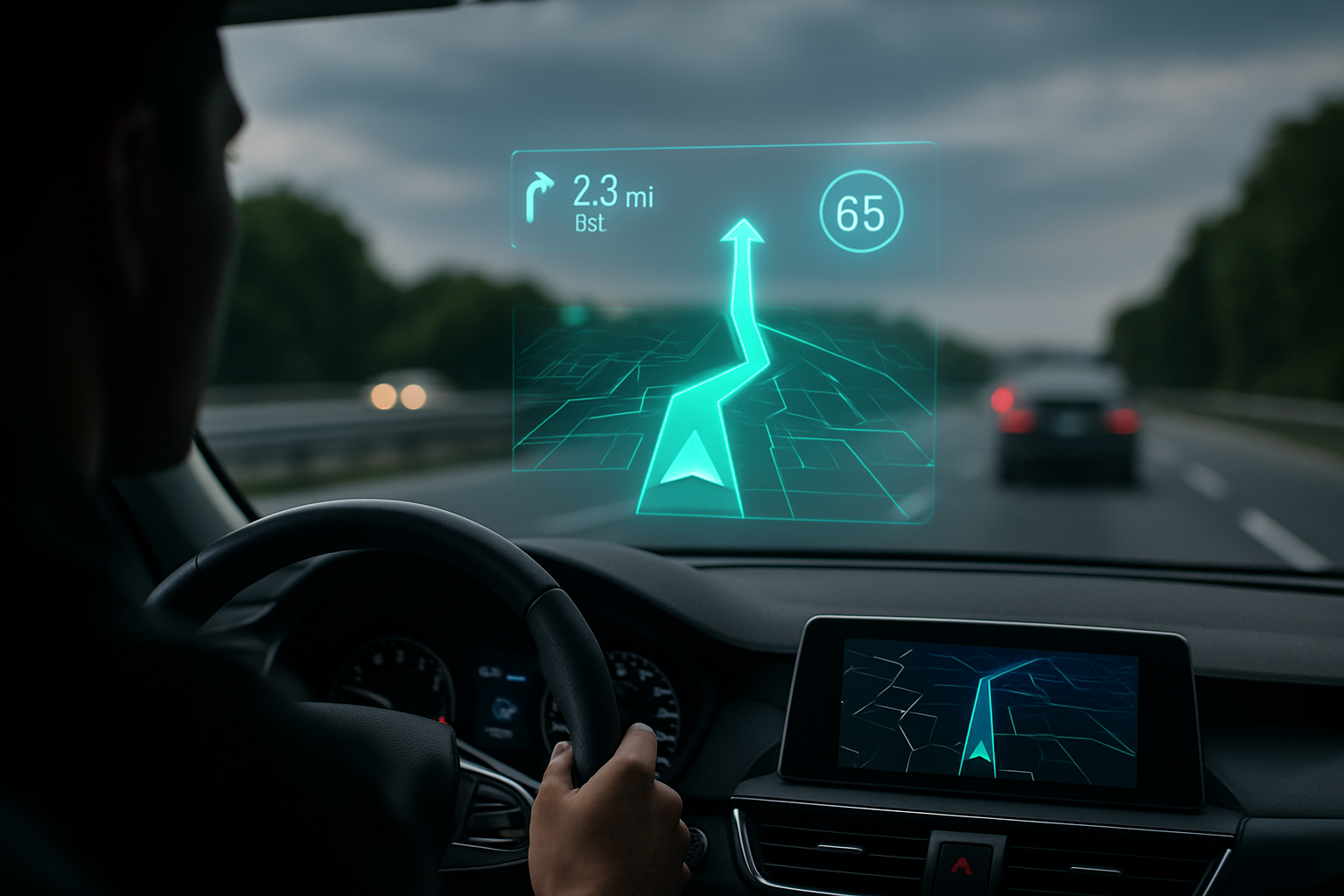Holographic Heads-Up Displays: The Next Frontier in Automotive Interface Design
The automotive world is on the cusp of a visual revolution, with holographic heads-up displays (HUDs) poised to transform the way we interact with our vehicles. This cutting-edge technology promises to enhance driver safety, streamline information delivery, and redefine the in-car experience. As we delve into this exciting development, we'll explore how holographic HUDs are set to become the next big leap in automotive interface design, potentially reshaping the entire industry.

How Holographic HUDs Work
At its core, a holographic HUD utilizes advanced optics and projection systems to create three-dimensional images that appear to float in the driver’s field of view. Unlike traditional HUDs that project flat images onto the windshield, holographic systems can display information at various depths, creating a more intuitive and less cluttered visual space. This technology relies on a combination of laser projection, specially designed holographic films embedded in the windshield, and sophisticated eye-tracking systems to ensure optimal visibility regardless of the driver’s position.
The Advantages of Depth Perception
One of the most significant benefits of holographic HUDs is their ability to present information in a way that mimics natural depth perception. By projecting different elements at various distances, these systems can prioritize information based on urgency or relevance. For instance, navigation arrows might appear closer to the driver’s eye line, while less critical information like the current song playing could be displayed further away. This layered approach reduces cognitive load, allowing drivers to process information more quickly and intuitively.
Enhanced Safety Through Augmented Reality
Holographic HUDs open up new possibilities for integrating augmented reality (AR) into the driving experience. By overlaying digital information onto the real world, these systems can provide drivers with unprecedented situational awareness. Imagine seeing navigation instructions appear as if they were painted on the road itself, or having potential hazards highlighted in real-time. This seamless blending of digital and physical realities has the potential to significantly reduce accidents and make driving safer for everyone on the road.
The Challenge of Information Overload
While the possibilities of holographic HUDs are exciting, they also present new challenges in terms of user interface design and information management. The temptation to display more information simply because it’s possible must be balanced against the risk of overwhelming or distracting the driver. Automotive designers and engineers are grappling with questions of what information is truly essential and how to present it in the most effective and least intrusive manner. The development of adaptive interfaces that adjust based on driving conditions and individual preferences is likely to play a crucial role in addressing these concerns.
Integration with Vehicle Systems
Holographic HUDs are not standalone technologies; their true potential lies in their integration with other vehicle systems. By connecting with sensors, cameras, and onboard computers, these displays can provide a holistic view of the vehicle’s status and its surroundings. From real-time traffic updates to vehicle diagnostics, the holographic HUD could become the central hub for all driver-vehicle interactions. This level of integration also opens up possibilities for predictive displays, alerting drivers to potential issues before they become problems.
The Road to Widespread Adoption
Despite the clear advantages of holographic HUDs, several hurdles must be overcome before we see widespread adoption. Cost remains a significant factor, with the advanced optics and processing power required pushing the technology out of reach for many vehicle segments. There are also technical challenges to overcome, such as ensuring visibility in all lighting conditions and accounting for the wide range of driver heights and seating positions. Regulatory approval is another consideration, as safety standards for such advanced visual systems are still evolving.
The Future of In-Car Interfaces
As holographic HUD technology matures, we can expect to see a radical transformation in vehicle interior design. Traditional instrument clusters and infotainment screens may become obsolete, replaced by customizable holographic projections that can be tailored to each driver’s preferences. This shift could lead to cleaner, more minimalist cockpits, with physical buttons and displays giving way to gesture controls and voice commands interacting with holographic interfaces.
Conclusion
Holographic heads-up displays represent a quantum leap in automotive interface design, offering a glimpse into a future where the line between the digital and physical worlds blurs. As this technology continues to evolve, it has the potential to not only enhance the driving experience but also to fundamentally change our relationship with our vehicles. While challenges remain, the promise of increased safety, improved information delivery, and a more intuitive driving experience make holographic HUDs one of the most exciting developments in automotive technology today. As we move forward, it’s clear that the future of driving will be shaped by these ghostly projections that turn science fiction into reality.





